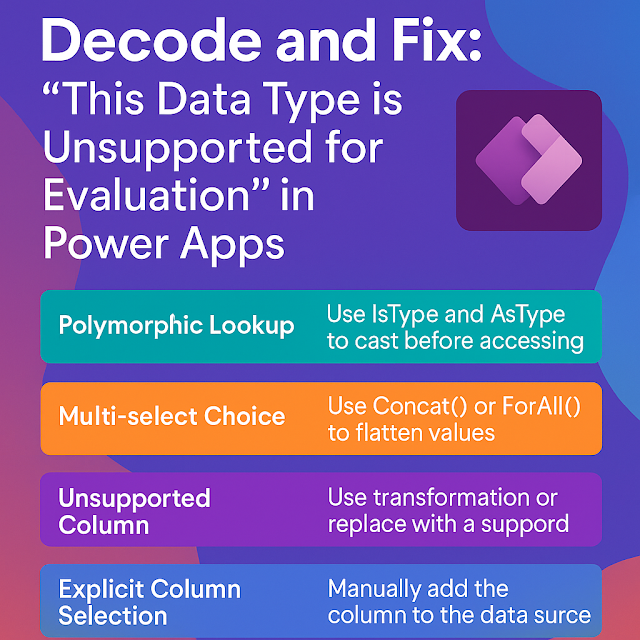Extend Your Solutions: Custom API + Field Mapping in Dataverse
Dataverse powers the heart of the Microsoft Power Platform, offering a rich relational data layer and a suite of tools for makers and developers. While low-code configurations can solve many business needs, there comes a point when complex business logic demands more.
Enter Custom APIs—your way to encapsulate server-side logic in a secure, reusable, and solution-aware package. Combine this with Field Mapping—which ensures automatic data population between related tables—and you unlock a powerful pattern for building sophisticated enterprise apps.
In this post, we’ll do a deep technical dive into:
- What Custom APIs and Field Mapping are
- Why they’re better together
- Real-world scenarios
- Best practices
- Pitfalls to avoid
What is a Custom API?
Custom APIs let you define your own operations in Dataverse, complete with input/output parameters and server-side logic. Unlike workflows or Power Automate flows, they’re built for high performance and enterprise ALM.
Features of Custom APIs
- Entity-bound or global
- Secure (role-based access)
- Plugin integration for C/JavaScript logic
- Solution-aware for ALM pipelines
- Callable from Power Apps, Power Automate, or even external systems
Example: Create a `SubmitServiceRequest` API that accepts `CustomerId` and `PriorityLevel`, and returns a `ConfirmationNumber`.
What is Field Mapping?
Field Mapping defines how attributes from one table populate another during create or update operations.
Say you're creating a Work Order from a Case:
- `Case.Title` → `WorkOrder.Name`
- `Case.Customer` → `WorkOrder.Account`
- `Case.Address` → `WorkOrder.Service Location`
This ensures consistency without manual intervention.
Why Combine Custom API and Field Mapping?
By combining both:
- Custom APIs handle business logic (create child record, call external APIs, enforce validations).
- Field Mapping automatically pre-fills related data.
This pattern creates clean separation of concerns:
- No duplicated UI logic
- Easier testing
- Faster iterations
Real-World Use Case: Field Service Automation
Problem
When a case is escalated, you need to:
- Create a Work Order.
- Auto-populate customer info.
- Send notifications.
Solution
- Custom API handles creation and notifications.
- Field Mapping pre-fills customer-related fields.
How to Implement (Step by Step)
Define a Custom API
In Dataverse:
Go to Solutions > New > Custom API
Set:
- Name: `SubmitServiceRequest`
- Binding Type: Entity-bound (bind to `incident`)
- IsPrivate: `No`
Create Plugin Logic
public void Execute(IServiceProvider serviceProvider)
{
var context = (IPluginExecutionContext)serviceProvider.GetService(typeof(IPluginExecutionContext));
var service = (IOrganizationService)serviceProvider.GetService(typeof(IOrganizationService));
Guid customerId = (Guid)context.InputParameters["CustomerId"];
string priority = (string)context.InputParameters["PriorityLevel"];
var workOrder = new Entity("msdyn_workorder")
{
["customerid"] = new EntityReference("account", customerId),
["prioritycode"] = priority == "High" ? 1 : 2
};
Guid woId = service.Create(workOrder);
context.OutputParameters["ConfirmationNumber"] = $"WO-{woId.ToString().Substring(0, 8)}";
}
Register this plugin step to your Custom API.
Configure Field Mapping
In the `incident → msdyn_workorder` relationship:
Map:
- title` → `name`
- customerid` → `serviceaccount`
- `description` → `instructions`
Call from Power Apps
Patch(
'SubmitServiceRequest',
Defaults('SubmitServiceRequest'),
{
CustomerId: GUID(txtCustomerId.Text),
PriorityLevel: drpPriority.Selected.Value
}
)
Power Automate:
Dataverse Connector → Perform a bound action → Select `SubmitServiceRequest`
Benefits
Limitations
Best Practices
Summary
Combining Custom APIs and Field Mapping allows you to build powerful, reusable, and maintainable enterprise-grade solutions in Dataverse. It separates UI from business logic while reducing duplication and ensuring consistent data handling.
Whether you’re a pro developer or a solution architect, this pattern will level up your Dataverse projects.















Comments
Post a Comment